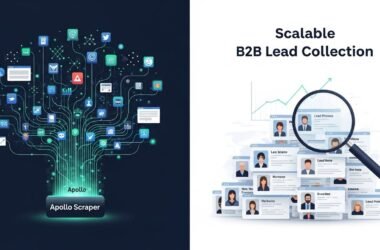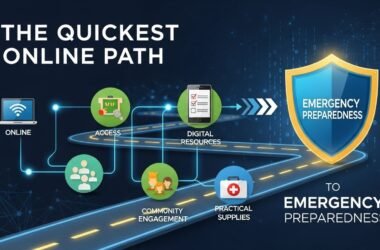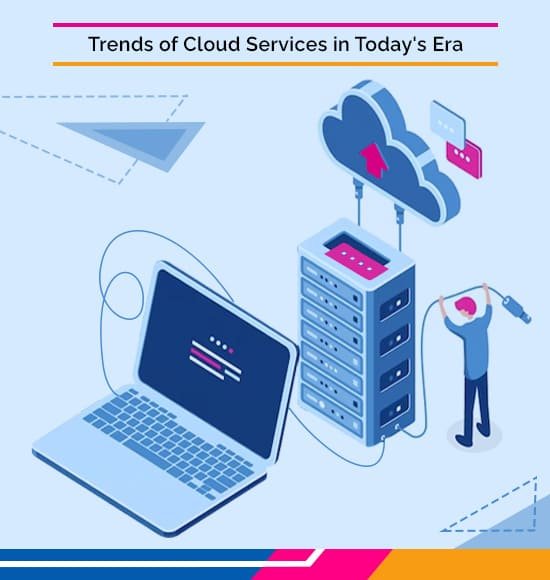Cloud services have emerged as a crucial tool for businesses. The epidemic made remote working choices possible, which forced every company to adopt platforms. Cloud service trends are prevalent in sectors including application and infrastructure software, business procedures, and system infrastructure.
In order to provide rapid innovation, adaptive resources, and scale economies, cloud computing services make computer system resources and services, including storage, servers, databases, software, networking, analytics, and intelligence, available on demand and delivered over the internet. This means that users can access these resources from any device with an internet connection at any time.
Furthermore, it is widely used by every company that wants to cut costs, maintain business continuity, and increase future scalability.
Software as a service (SaaS)
SaaS is a cloud computing service that allows providers to host software applications and make them accessible to customers online. Usually, SaaS applications are accessed through a web browser and require a subscription charge.
Email services, customer relationship management (CRM) software, and project management tools are a few examples of SaaS applications.
Infrastructure as a service (IaaS)
In IaaS, providers offer virtualized computing resources (such as storage, servers, and networking) over the Internet. Using these resources, developers can build, launch, and manage their applications and services. Customers can manage and maintain the software applications they use to run on the virtual infrastructure with IaaS.
Platform as a service (PaaS)
PaaS allows users to access a platform for developing, deploying, and managing applications. Providers often provide tools and services to developers to build, test, and deploy applications, in addition to managing the underlying infrastructure.
Since PaaS offers more control and flexibility than SaaS and less administration overhead than IaaS, it can be considered a middle ground between the two.
Here are the top cloud service trends to look out for in 2023 as they keep developing.
Edge computing
Edge computing is a method for optimizing cloud network systems and one of the biggest trends in cloud computing. It processes data at the network’s edge, close to the data sources. Edge computing works in real-time on cloud servers, processing data that isn’t too time-bound and storing it for long-term use.
As a result, edge computing will become more prominent and open up a variety of options and applications for businesses as the telecom and IT industries continue to converge.
Multi and hybrid cloud solutions
A hybrid cloud solution combines the functionalities and features of a private cloud solution with those of a third-party public cloud platform. The workload will often be moved from public to private clouds and back using such a solution. As a result, users will have greater flexibility in data sharing and access.
Better ML and AI
Machine Learning and Artificial Intelligence are closely related to cloud computing and are cost-effective as large amounts of computational power and storage are required. These can be employed to manage enormous amounts of data and improve the productivity of tech firms. Increased automation and self-learning capabilities, improved data security and privacy, and a more personalized cloud experience are the key trends likely to emerge in this field.
Serverless architecture
The serverless architecture within an organization’s infrastructure eliminates all the traditional IT infrastructure barriers. This eliminates the need to rent or purchase the servers for running data. Instead, this can be handled for you by a dedicated third party. This enables your company to concentrate on other, more important responsibilities.
Below are the several benefits of serverless enterprise architecture:
- Lower cost
- Reduce liability
- No need for system administration
- Improved offline experience
- Easy operational management
Automation
The potential for automation is the key ingredient in cloud computing. Automation is not easy, but its proper implementation may boost the efficiency of your delivery team, enhance the reliability of systems and networks, and lower the risk of delayed systems or downtime. More devices will likely be produced to make automation much more convenient for cloud companies as an investment in citizen developer tools and AI expands.
Cloud security and resilience
In this digital era, many businesses are moving their operations to the cloud, and security and resilience have become top priorities. Because of this, cloud service providers are eagerly investing heavily in security and resilience features to guarantee the protection of customer data. Data encryption, access controls, and disaster recovery are among the features that cloud providers invest in to secure the data of their clients.
Cloud Gaming
Amazon, Sony, Nvidia, and Microsoft all offer video gaming services. Nevertheless, streaming video games requires more bandwidth and is only feasible with fast internet connectivity. With the launch of 5G in 2023, cloud gaming will grow into a sizable sector.
Blockchain
Blockchain technology is an advanced database system that allows the transparent sharing of information within a business network. A blockchain database stores data in blocks linked together in a chain and keeps growing as users add to it. Data is stored in a block using cryptography. It provides transparency, excellent security, and decentralization. This technology is now often employed in conjunction with the cloud.
Blockchain can aid in processing enormous amounts of data and control documents economically and securely. For many industrial applications, the new technology is showing great promise.
IoT
IoT in cloud computing is a well-known trend. This technique is used to keep servers, networks, and computers connected. It serves as a middleman, enables effective communication, and helps gather data from distant devices. To establish a safer cloud environment, it also addresses alerts and supports the security measures enterprises use.
Final thoughts
With so many advantages, it’s easy to see why many companies are switching to the cloud. It’s also difficult to deny that businesses that quickly embraced cloud technologies are outperforming their counterparts. With that being said, it’s never too late to make the switch.








